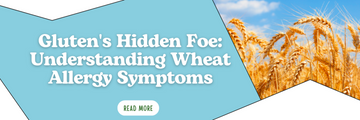Food allergies are very common, affecting millions worldwide. The top allergens affecting 90% of people with food allergies include peanuts and tree nuts. While these two seem like similar things, they're not. Tree nuts grow on trees, while peanuts are more legumes. Understanding the difference between these two can help you identify your allergies and what to avoid in your diet.
The difference between a tree nut and a peanut
Even though peanuts have the name "nuts," they're not nuts. They're, however, classified as legumes as they're in the same family as lentils, beans, and peas. However, tree nuts are actual nuts that grow on trees. Some examples of tree nuts include almonds, walnuts, pecans, hazelnuts, pine nuts, and lychee nuts.
Being allergic to one type of tree nut doesn't mean you're allergic to all. However, being allergic to one type increases your chances of being allergic to others. Around 25%-40% of people with peanut allergy also react to atleast one type of tree nut.
Cross-contamination risk between tree nuts and peanuts
It is common for peanuts and tree nuts to be processed in similar facilities. Due to this, you'll often find there cross-contamination. You can decide to avoid all peanuts and tree nuts for safety purposes or only take the ones that aren't processed in the same facility as the product you're allergic to.

If your child has either a tree nut or peanut allergy, consult their doctor on what you can feed them. According to a 2010 US study, an increasing number of children suffer from peanut allergy. This number has risen significantly over the past decade.
People with peanut or tree nut allergies often wonder whether they should avoid nutmeg and coconut. Coconuts are not botanically nuts, but the Food and Drug Administration recognizes them as nuts. While some people have a coconut allergy, most people allergic to tree nuts can eat coconuts safely without experiencing symptoms.
Some other substances are named "nuts," like water chestnuts, macadamia, and pine nuts. Even though these contain the nem "nuts," they're seeds and won't cross-contaminate with your peanut and tree nuts allergy.
On the other hand, nutmeg is a spice made from seeds; therefore, it's not a nut. So, it's safe for people with peanut and tree nut allergies to use nutmeg to spice their foods.
Symptoms of tree nuts and peanut allergy
Tree nuts allergy is the most common food allergy. Additionally, tree nuts, peanuts, and shellfish are food allergens frequently linked to anaphylaxis. Anaphylaxis is potentially life-ending if not promptly treated. Symptoms of tree nuts and peanut allergy include:
- Diarrhea
- Abdominal pain
- Nausea or vomiting
- Difficulty swallowing
- Anaphylaxis
- Itchiness in the throat, mouth, eyes, skin, and other parts of the body
- Shortness of breath
- Runny nose or nasal congestion
You'll need a doctor if you experience these symptoms, which are more than mild. For mild situations, over-the-counter antihistamines will help you out. When you have food allergies, you can even suffer from symptoms by inhaling the powder of that food, its aroma when being cooked, or even by touching it.
So, you need to be aware of the level of severity of these allergens so that you can prevent contact. When you're careful, you won't suffer from symptoms. When you are sensitive to tree nuts or peanuts, you will experience gastrointestinal symptoms that take a while to appear (upto three days). You can test for sensitivities through a Sensitivity Test.
Treatment of tree nuts and peanut allergies
The only proven treatment method for food allergies is avoidance of trigger foods. Removing peanuts and tree nuts from your diet has no major consequence, and other foods can offer a similar nutritional profile. However, you can talk to your doctor for further guidance on managing your diet.
Implementing this for children going to school can be harder since they tend to share food. However, a rule can be enforced by teachers about sharing food. These teachers should also have EpiPens just in case there is accidental ingestion of trigger foods. It can even be useful for cafeterias to eliminate the top allergenic foods from their menu to prevent cross-contamination of any sort.
However, you must know what you're allergic to before managing your tree nut and peanut allergies. You can do this by taking an allergy test. This allergy test checks for all the common food allergies that affect people and will test for tree nut and peanut allergies. After you're aware of your allergies, you can decide how to manage them with your doctor's guidance. However, if you have more abdominal discomfort, you can take a Sensitivity Test to check for sensitivity to all these nuts.
Managing peanut and tree nut allergies
Even though you can't automatically remove the risk of ingesting food allergy triggers, you can take precautions to minimize the risk of these allergens. Some of these include:
- Do not stock these items in your home; thats is the best way to prevent cross-contamination and accidental consumption of foods you're allergic to.
- When visiting restaurants, let them be aware of your food allergies and explain to them further about cross-contamination to prevent it. Luckily, most restaurants know about food allergies and can take good care of you.
- Only eat at a restaurant without letting them know your food allergens. Sometimes, you'll find that nuts are hidden in some dishes to add texture and flavour, and it's not listed on the menu.
- If your doctor has prescribed an EpiPen, carry it at all times and always ensure it's not expired. Learn how to use it and teach those around you, too, in case of emergencies. If you experience moderate symptoms, always have antihistamines since they're lifesavers.
- If you can, always consume homemade food because you'll know what's in your food to avoid an allergic reaction.
Final thoughts
Tree nuts and peanut allergies are quite common since they're among the top nine food allergies, affecting 90% of those with allergies. The first step to managing these allergies is knowing what you're allergic to, and you can do that by taking an allergy test. You can then decide to eliminate your trigger nut from your diet. If you have more digestive discomfort, you can take a Sensitivity Test to know which foods are causing you these symtpoms. You will, however, also need to check out for cross-contamination, especially when different nuts are processed in the same company. Once you're aware of your allergies, managing them is easier.







